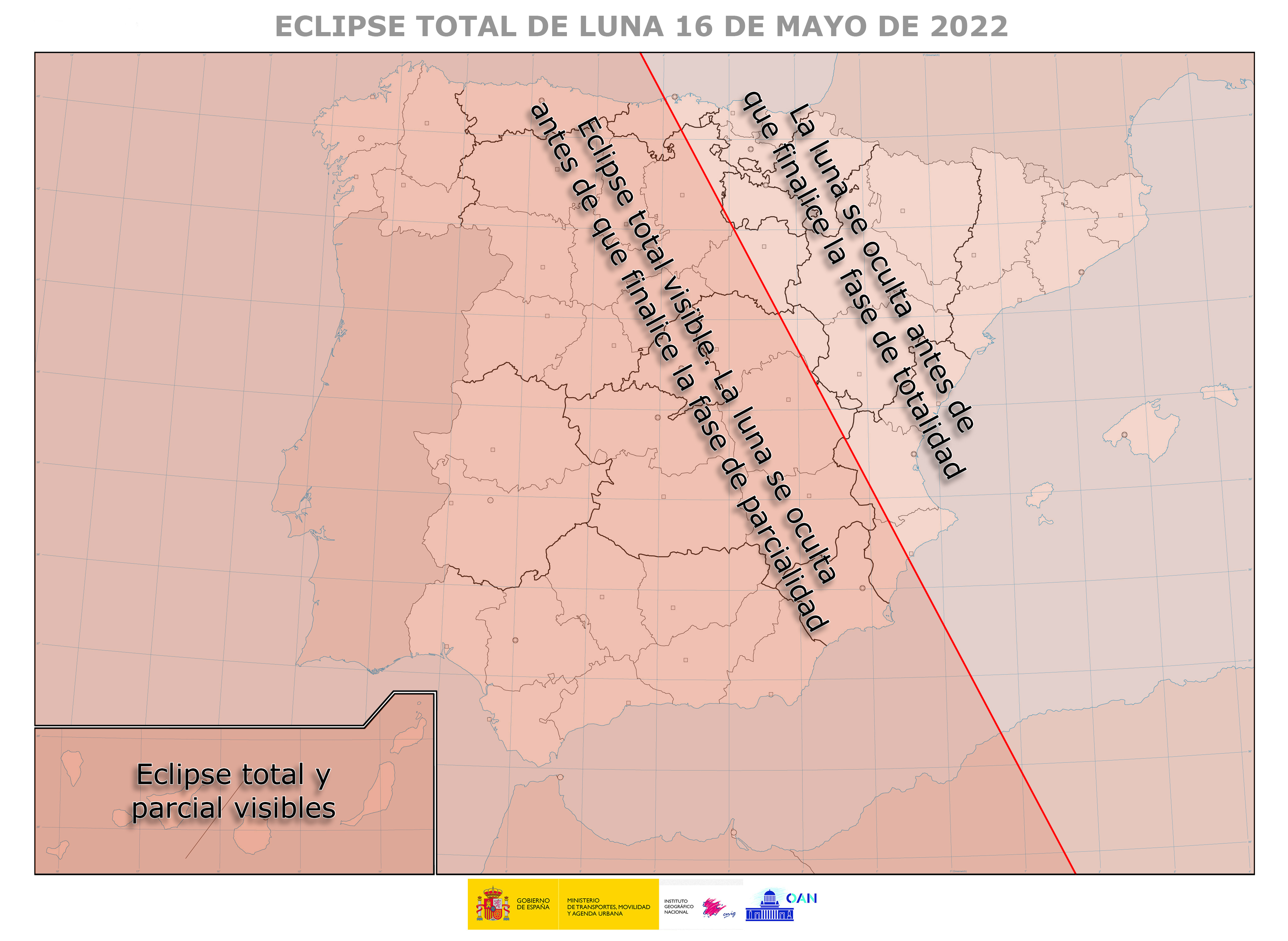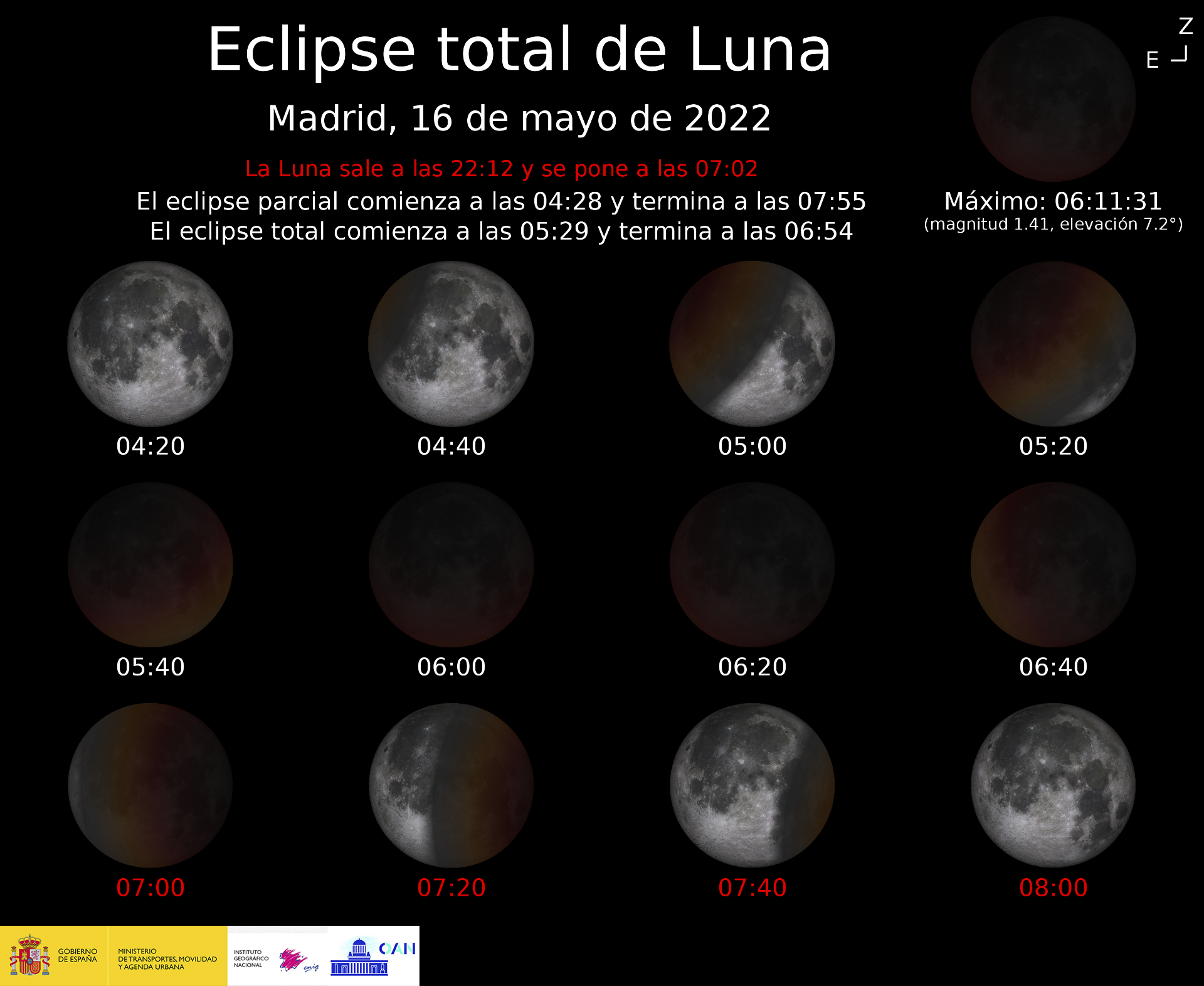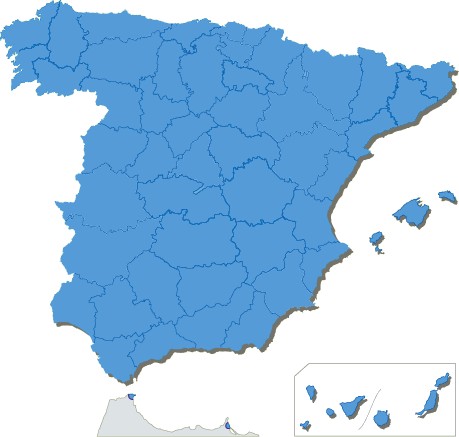May 16, 2022
Lunar Eclipses
A lunar eclipse is a phenomenon in which the Earth prevents the light of the Sun from reaching the Moon, creating a cone of shadow that obscures the Moon. The totally eclipsed Moon acquires a characteristic reddish color due to the dispersion of the refracted light by the Earth's atmosphere.
Unlike solar eclipses, which can be seen only from a relatively small part of the Earth and last only a few minutes, a lunar eclipse can be seen from any part of the Earth where it is nighttime and last for several hours.
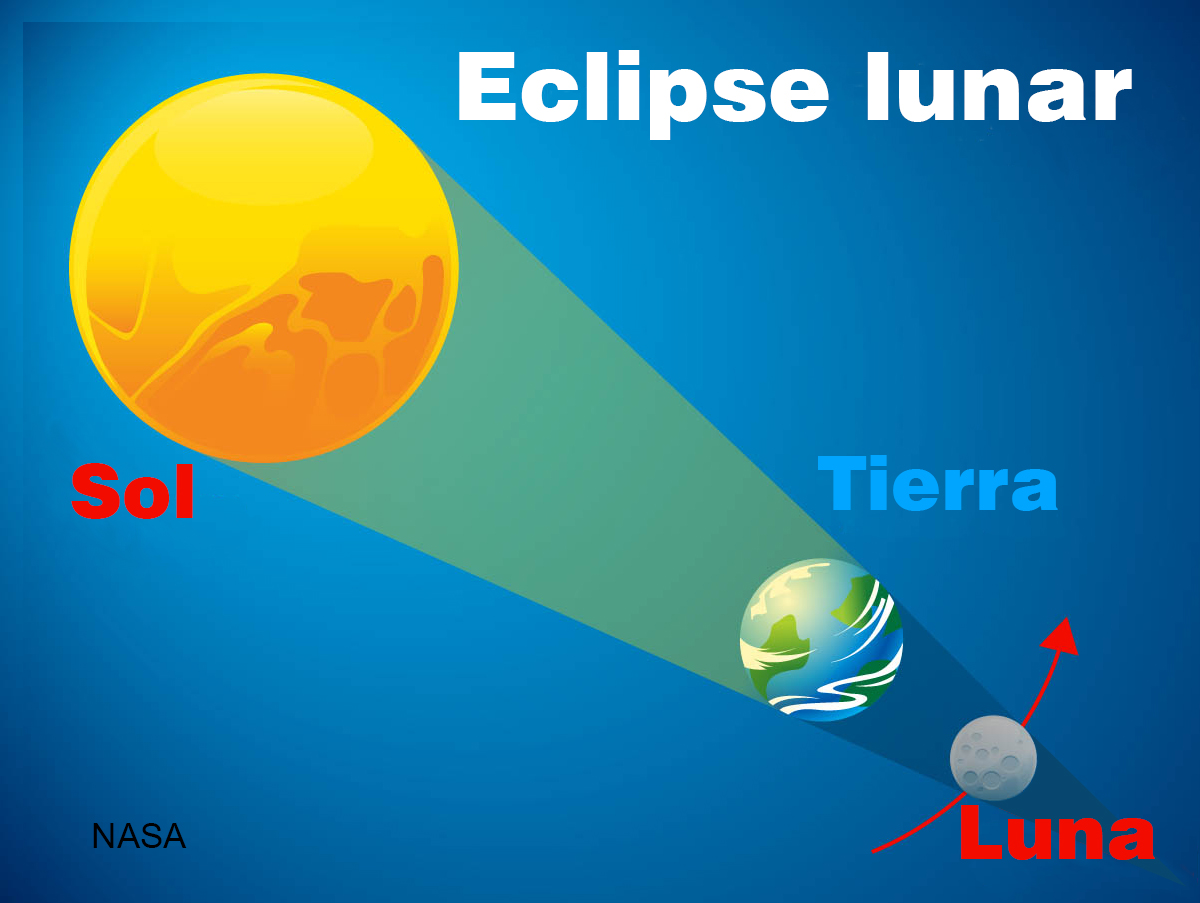
Types of eclipses
Due to the angular size of the Sun, the shadow cast by the Earth consists of two zones: the umbra and the penumbra. In the umbra there is no direct solar radiation, while in the penumbra solar radiation is only partially blocked. Eclipses are therefore classified into total, partial and penumbral eclipses. An observer will say that he or she has seen a total eclipse when the Moon is completely located in the umbral zone. When only part of the Moon is in the umbra, the eclipse is partial. If the Moon is located in the penumbra, the eclipse will be penumbral, and only a subtle darkening of the lunar surface will occur.
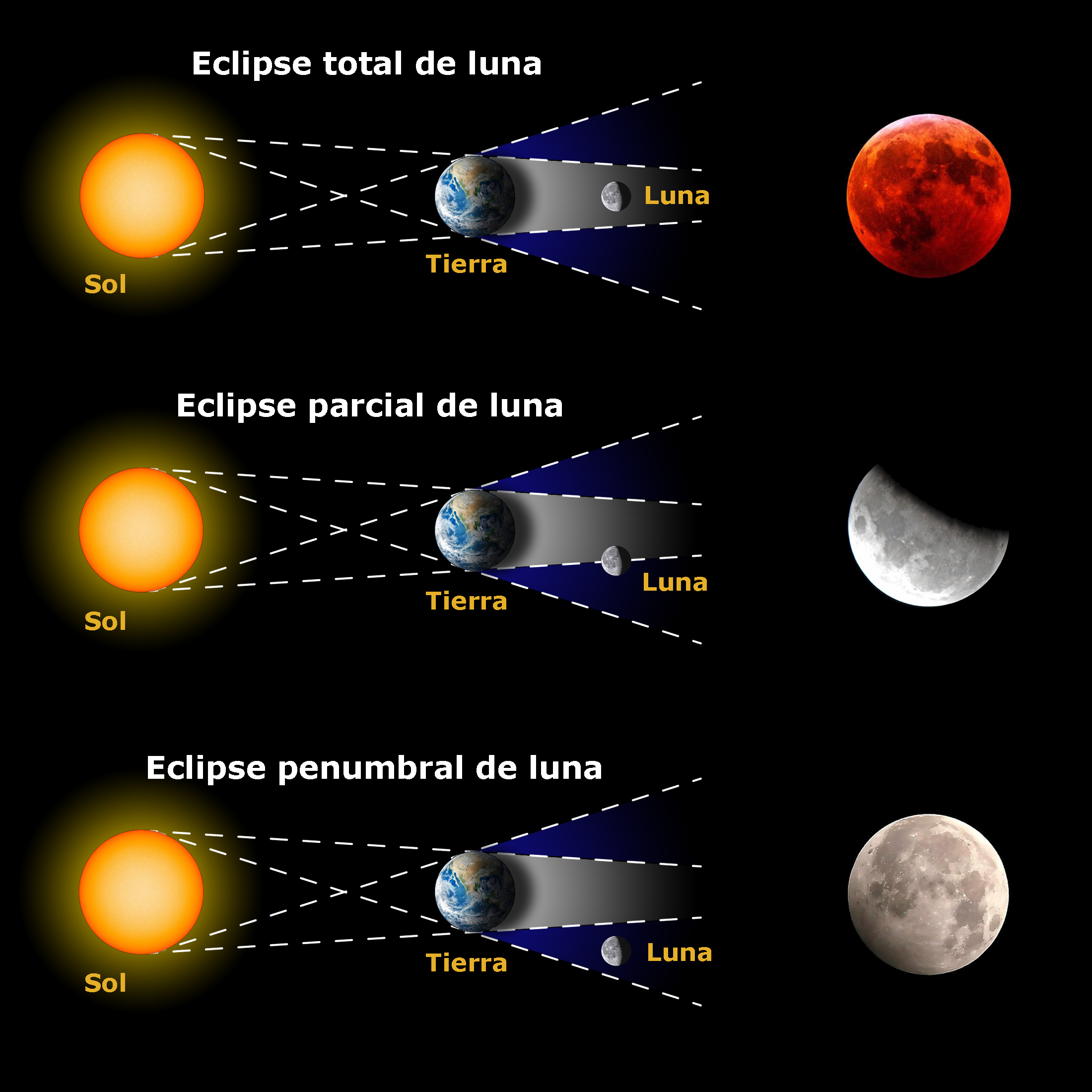
When do eclipses occur?
The plane through which the Moon orbits the Earth (shown in blue in the figure below) is tilted 5º with respect to the plane through which the Earth (and Moon) orbits the Sun (shown in yellow). Because eclipses require the near-perfect alignment of the three celestial bodies, eclipses occur very few times during the year. The Moon takes about one month to complete one revolution around the Earth, so if the two planes coincided we would have 12 eclipses of the Sun and 12 eclipses of the Moon each year. In practice, the number of eclipses that occur each year is between 4 and 7, including those of the Sun and Moon. In many cases the eclipses are partial (or even penumbral only for lunar eclipses), and visible from a fraction of the Earth's surface. When the Moon is close to the Sun in the sky, in the new Moon phase, there is a possibility of a solar eclipse. When the Moon is in the opposite direction of the Sun, visible all night in full Moon phase, there is a possibility of a lunar eclipse.
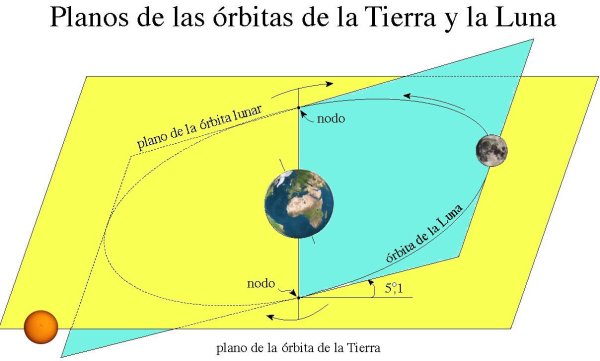
Basic information
During the night of May 16, 2022 it will be possible to observe a total lunar eclipse that will be visible from most of the world and that in Spain will be visible as total. The observation of the eclipse can be made with the naked eye and does not involve any danger or require any special instrumentation.
In the northeast of the Iberian peninsula and the Balearic Islands, the Moon will set before the end of the total eclipse (that is why only the beginning of the total phase will be seen, but not its end), while in the rest of the peninsula the total phase will be seen in its entirety. In the peninsula, Ceuta and Melilla we will not see how the Moon leaves the Earth's shadow (because the Moon sets over the horizon during this phase), but in the Canary Islands we will be lucky enough to see this phase in its entirety. During the total eclipse, the Moon will not be completely dark, but will take a reddish hue, that is due to part of the sunlight that is deflected by the Earth's atmosphere.
In the image above you can see the evolution of the eclipse as seen from the peninsula. The times correspond to the official time.
In the tab From the province capitals you can consult the evolution of the eclipse for each of them.
From the province capitals
You can select the province in the map below to obtain the sequence of the eclipse as it will be seen from its capital city, with the times expressed in official time. The phases of the eclipse labeled in red indicate that at that time the eclipse is not visible because the Moon is below the horizon.
If the horizon is not completely clear the Moon will appear above the horizon later than indicated, approximately 5 minutes later for each degree of horizon obstruction in elevation.
The image loaded by default corresponds to the Madrid eclipse sequence, and can be enlarged by clicking on it.
Details
The eclipse will be visible in some of its phases in: western Asia, most of Europe, Africa, North America (except its westernmost tip), South America and Antarctica. The area where it will be visible corresponds to the colored part of the attached figure.
The totality phase of the eclipse will be visible in: southwestern Europe, central and western Africa, most of North America, South America and Antarctica. The area where totality will be visible is delimited by the inner part of the curves labeled iT and fT.
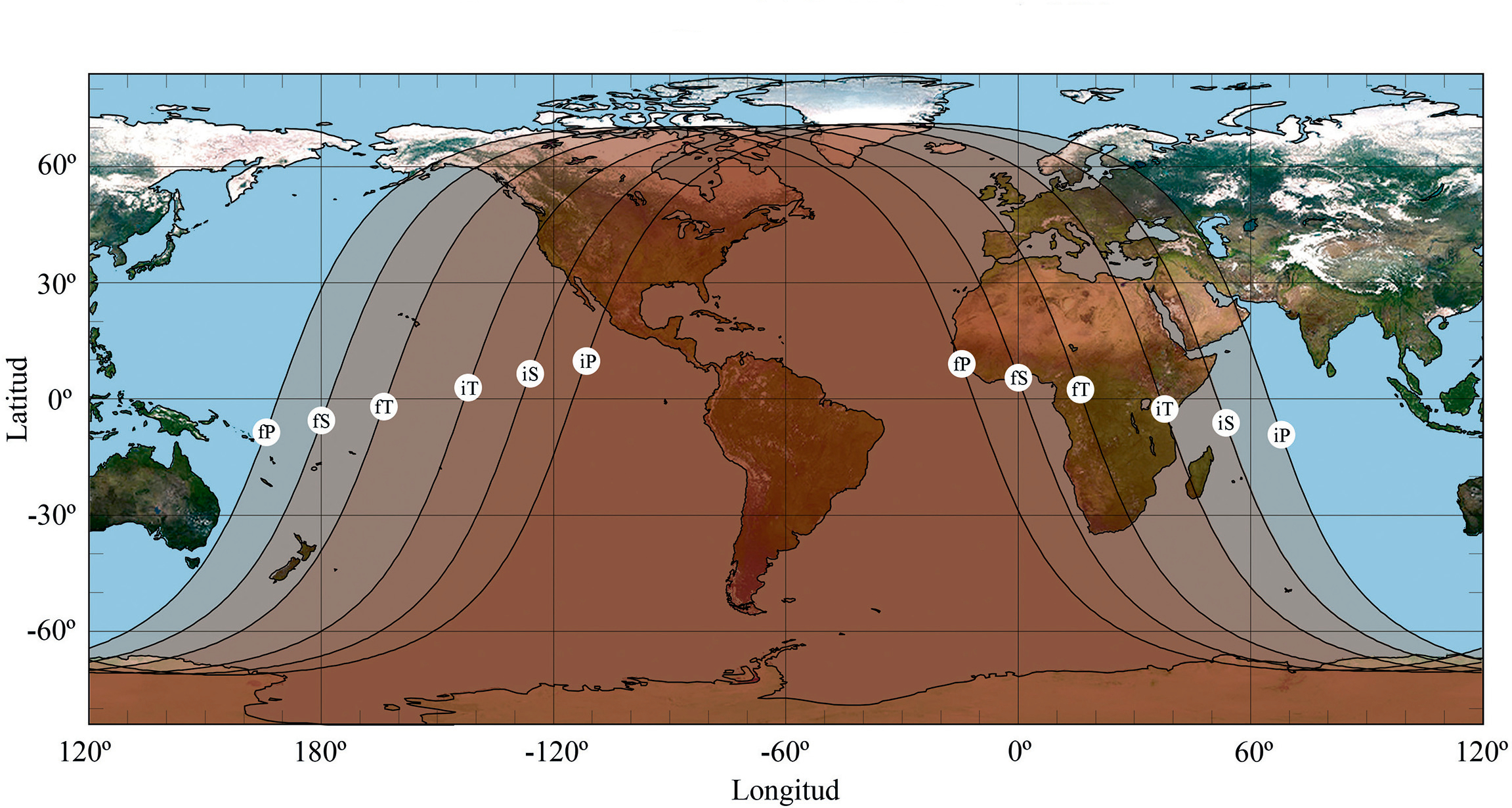
The eclipse will be visible as total throughout Spain, depending on the area from which we observe, we will be able to see completely its total and partial phases or only part of them, because the Moon will set before the end of the eclipse.

